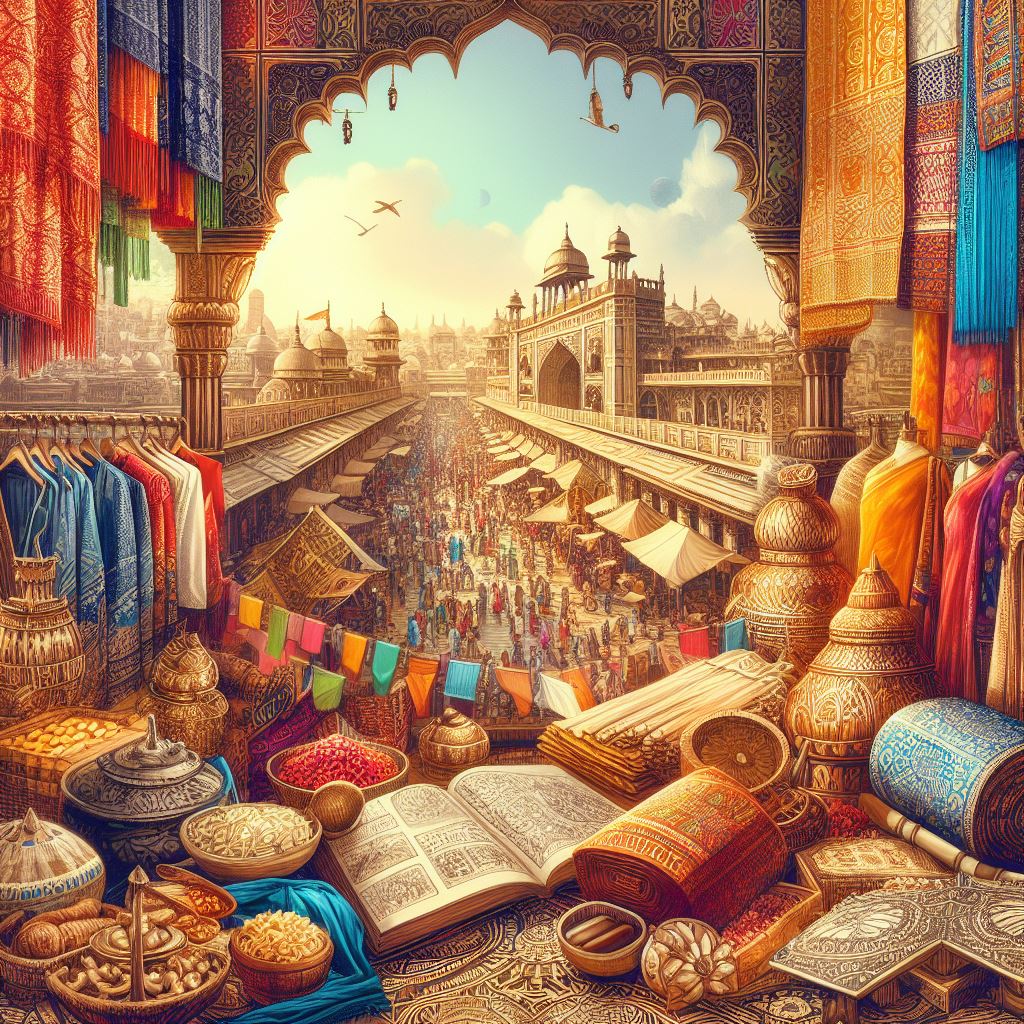In the intricate world of supply chain management, procurement and sourcing are fundamental elements that play distinct yet interconnected roles. At Product Sourcing India, we understand the necessity of delineating between these two functions to effectively manage and optimize business operations. Both are pillars of an organization’s strategic and operational framework, influencing everything from cost efficiency to product availability.
| Key Point | Takeaway Summary |
|---|---|
| Definitions | Procurement is the acquisition of goods, while sourcing is finding and selecting suppliers to provide those goods. |
| Process Variance | Procurement focuses on processing and managing purchase transactions, sourcing is strategic in nature. |
| Strategic Importance | Sourcing involves long-term supplier relationships, and procurement is tactical and transactional. |
| Direct vs. Indirect | Direct procurement feeds production, indirect supports operations. |
| Technology Integration | Technologies like AI, ERP, and P2P systems are optimizing procurement and sourcing workflows. |
| Cost Analysis | A Total Cost of Ownership approach in sourcing provides comprehensive cost insights over product life. |
| Sustainability and Ethics | Modern procurement and sourcing integrate sustainable and ethical practices in business operations. |
| Industry Variances | Different industries have varied procurement and sourcing needs based on the market and regulations. |
| Current Trends | Sustainable sourcing, diversity, resilience, and technology adoption are key trends. |
Procurement is generally viewed as the process of obtaining goods and services to meet business demands, while sourcing is the act of identifying and qualifying suppliers that can provide these goods and services. Despite their unique goals and processes, the two are intrinsically linked within the broader scope of supply chain strategy.
The Role of Procurement in Business
Procurement’s significance in business cannot be overstated. It is a systematic process that directly impacts an organization’s bottom line through the acquisition of necessary goods and services. Effective procurement strategies not only drive cost savings but also foster operational efficiency and quality improvements.
Integral to procurement is its ability to assure the quality and timeliness of inputs needed for organizational functioning—from the routine restocking of office supplies to securing critical manufacturing components.
The Sourcing Strategy
Sourcing is a strategic aspect within supply chain management, focusing on the identification, evaluation, and engagement of suppliers. This process is about building robust partnerships and obtaining the best possible value from the vendor network.
Beyond mere price considerations, sourcing emphasizes the strategic selection of suppliers based on criteria such as reliability, quality, and innovation capabilities, driving long-term competitive advantage.
Procurement vs. Sourcing: A Comprehensive Comparison
Understanding the difference between procurement and sourcing is vital. While procurement encompasses the process of acquiring goods and services, sourcing is more concerned with developing the supply base and often precedes procurement.
One cannot function effectively without the other; they are complementary processes with sourcing identifying and vetting suppliers and procurement engaging with them.

Stages of the Procurement Cycle
The procurement cycle consists of several stages—from requirement identification and purchase requisition to order execution and payment settlement. Each stage of this cycle functions with the objective of securing the required items at the best cost and within the desired timeframe.
Through these stages, procurement serves not just to fulfill an immediate need but to align purchasing activities with the broader strategic goals of the company.
Elements of a Robust Sourcing Process
Identifying the best suppliers is not just a matter of cost — it’s a multidimensional process that scrutinizes potential partners across various parameters. The sourcing process involves thorough supplier assessments and negotiations to secure the best possible terms.
Crucial to this process is the maintenance of supplier relations. Good supplier relationship management can yield benefits such as improved service levels, innovation, and even exclusive terms or products.
Direct and Indirect Procurement Explained
Procurement is bifurcated into two categories — direct and indirect. Direct procurement relates to purchasing the core goods and services that directly contribute to a company’s primary business activities. In contrast, indirect procurement is concerned with obtaining goods and services required for day-to-day operations.
Different strategies and management approaches are applicable for each, impacting how procurement professionals prioritize the acquisition of diverse resource categories.
Explore the Indian Supplier Identification services provided by our company
Global Sourcing and Its Advantages
Advances in globalization have paved the way for global sourcing, allowing companies to procure goods and services across international borders. This practice leverages global efficiencies such as lower cost labor, favorable economic conditions, and broader access to technologies.
The benefits of global sourcing often extend to cost optimization and exploring innovative solutions that can be adapted to domestic markets for competitive advantage.
Negotiating Contracts: Procurement’s Pivotal Practice
Effective contract negotiation is a cornerstone of procurement proficiency. Procurement specialists use their expertise to forge contracts that minimize risk and maximize value for their organizations.
Robust negotiation strategies ensure favorable pricing, but also address terms such as delivery schedules, payment terms, and service levels, which can all radically influence cost and operational performance.
Supplier Evaluation and Selection in Sourcing
The evaluation process in sourcing seeks to identify suppliers that meet the stringent qualifications necessary to maintain company standards. Selection methodologies may include performance scoring, capacity analysis, and assessing the financial stability of potential vendors.
This meticulous approach ensures that chosen suppliers align with the organization’s quality standards and can meet the demands of the business effectively.
Technology’s Role in Modern Procurement and Sourcing
Digital transformation has fundamentally changed the landscape of procurement and sourcing with advancements like procurement software, e-procurement, and supply chain management systems.
Modern technology enables procurement and sourcing professionals to perform activities with greater accuracy and efficiency, offering comprehensive data analytics for informed decision-making.
Cost Considerations and Total Cost of Ownership (TCO)
In procurement, careful consideration is given to achieving cost savings while sourcing extends to the concept of Total Cost of Ownership (TCO). TCO includes the initial purchase price and encompasses all costs related to the acquisition, use, and maintenance of the acquired goods or services.
Understanding TCO is essential for sourcing to ensure that decisions yield beneficial outcomes over the product or service lifecycle.

Ethical Procurement and Sustainable Sourcing
Organizations worldwide are increasingly committing to ethical procurement and sustainable sourcing as part of their corporate responsibility programs. The drive towards ethical practices includes social, environmental, and economic aspects, reflecting a holistic approach to procurement and sourcing.
Ethical procurement practices may mandate supplier compliance with labor laws and environmental standards, while sustainable sourcing focuses on sourcing products that are produced in an ecologically friendly manner, promoting long-term viability.
Procurement and Sourcing in Different Industries
Procurement and sourcing methodologies may vary across different industries, influenced by specific sector challenges, regulatory requirements, and market conditions. Understanding industry-specific best practices and regulatory frameworks is vital for the proficiency of procurement and sourcing functions.
Case studies across various sectors offer valuable lessons on refining these practices to align with the unique demands and opportunities presented within diverse industries.
Overcoming Challenges in Procurement and Sourcing
Professionals in these fields often encounter challenges related to market volatility, supply chain disruptions, and maintaining supplier relationships. Procurement and sourcing strategies must evolve and adapt, employing agile methodologies to navigate and mitigate these challenges.
Mastering Supplier Quality Management
The intricate relationship between procurement and sourcing is reflected in supplier quality management — an area where both disciplines must align for organizational success. Effective quality management ensures consistency and reliability in the provision of products and services, directly impacting customer satisfaction and business reputation.
Learn more about Mastering Supplier Quality Management in India
Vendor Managed Inventory (VMI) and Its Relevance
Vendor Managed Inventory (VMI) is an operational strategy wherein a supplier manages inventory levels for the customer, reflecting a partnership approach to procurement and sourcing. VMI can enhance efficiency by reducing stockouts and minimizing inventory holding costs.
This collaborative method of inventory management can fortify the supplier-customer relationship, offering a win-win situation for all parties involved.
The Future of Procurement and Sourcing
Emerging trends are shaping the future of procurement and sourcing, including increased use of artificial intelligence, machine learning, and big data analysis. These advancements promise to bring further sophistication to these practices, enabling greater strategic value and innovation.
Organizations that keep pace with these trends and continuously refine their procurement and sourcing strategies are well-positioned to capitalize on the benefits they present.
Conclusion: Strategic Integration of Procurement and Sourcing
As we conclude this exploration, the key distinctions and strategic interplay between procurement and sourcing become clear. We encourage businesses to consider the specialized yet collaborative nature of these processes and the essential role they play in any organization’s success.
Through strategic integration and alignment of procurement and sourcing, businesses can achieve operational excellence and deliver tangible value to stakeholders. We at Product Sourcing India remain devoted to offering insights and expertise that amplify the efficiency and effectiveness of your procurement and sourcing initiatives.
FAQ
- What is the main difference between procurement and sourcing?
- Procurement focuses on the process of acquiring goods and services for business needs. Sourcing is about finding, assessing, and selecting suppliers to provide these goods and services.
- How do direct and indirect procurement differ?
- Direct procurement is related to purchasing raw materials and products for production purposes, while indirect procurement deals with the acquisition of supplies needed for day-to-day operations.
- What role does technology play in modern procurement and sourcing?
- Technology streamlines procurement and sourcing processes through automation, enhanced data analytics, and improved communication, increasing efficiency and driving strategic decision-making.
- Why is understanding Total Cost of Ownership important in sourcing?
- Total Cost of Ownership helps businesses evaluate not just the purchase price but all associated costs throughout the life of a product or service, ensuring more accurate and holistic sourcing decisions.
- What are some current trends influencing procurement and sourcing?
- Trends such as sustainability, ethical sourcing, digital transformation, and an increased focus on risk management are reshaping how procurement and sourcing are conducted in today’s market.

Stay up-to-date with cutting-edge procurement and sourcing strategies by consulting reputable sources like the Institute for Supply Management (ISM), the Chartered Institute of Procurement & Supply (CIPS), and the Association for Supply Chain Management (ASCM) for professional development and industry best practices. These platforms offer extensive resources to help navigate the complexities of procurement and sourcing in the modern business milieu.
This key takeaway table encapsulates the core points discussed in our article. For further elucidation on procurement, sourcing, and their applications within business, refer to the Institute for Supply Management (ISM), the Chartered Institute of Procurement & Supply (CIPS), and the Association for Supply Chain Management (ASCM) for globally acknowledged standards and resources.






